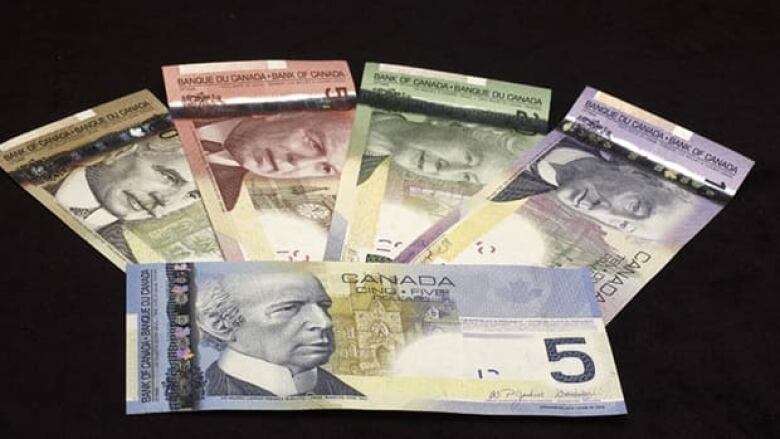Canadian banknotes to be made of plastic

The Bank of Canada will begin churning out a series of redesigned banknotes later this year that will be made of a plastic polymer material.
Canadians will literally feel the change first in the $100 bill. The reissued high denomination noteswill start appearing in November.
Lower denomination bills will besimilarly reworkedover the following two years, with the new $50 bill set to appear in March 2012.
The polymer material features a smooth durable film developed specifically for banknotes. The technology is already being used in several countries.
The Bank of Canada has periodically redesigned the country's paper money to stay one step ahead ofcounterfeiters. The incidence of funny moneyrose dramatically in the period from 1992 to 2004when about 500 phoney bills turned up in everymillion notes in circulation.
Counterfeit Canadian banknotes passed in 2009 | |
|---|---|
| Denomination | Number of bills |
| $5 | 2,894 |
| $10 | 8,342 |
| $20 | 24,762 |
| $50 | 5,653 |
| $100 | 25,030 |
| $1,000 | 5 |
| Source: RCMP | |
In 2004, the central bank began introducing a redesigned series of notes that incorporated a host of security features, including holographic stripes. The rate of phoney bills has since fallen dramaticallyto fewer than 50 bad bills per million.
In 2009, the RCMP says 66,711 counterfeit notes worth $3.4 million were passed.
Bank of Canada governor Mark Carneysaid the new technology "will expand the frontiers of banknote security" even further.
The new banknoteswill also be easier to verify and will be more economical. The use of polymer material should allow bills to remain incirculation at least 2.5 times longer than the cotton and paper bills now in circulation, the Bank of Canada says.












_(720p).jpg)


 OFFICIAL HD MUSIC VIDEO.jpg)
.jpg)



























































































